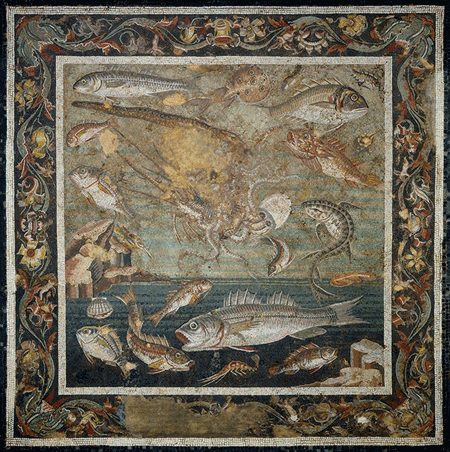
The dusky grouper (Epinephelus marginatus) is reputedly the best-tasting of all Mediterranean fish, so it comes as no surprise that they find themselves endangered. Efforts are underway throughout the Mediterranean to help the species recover, and, according to an article in this month’s Scientific American, ancient art is playing a part.
To determine just how far recovery efforts had to go, scientists wanted to get a sense of how the grouper has changed in the past thousands of years. University of Salento biologist Paolo Guidetti remembered having once seen an image of a Roman mosaic depicting an enormous grouper swallowing a man. Guidetti was struck by the image; while dusky groupers today can grow to be more than four feet long and a weigh around 100 pounds, most are much smaller, and generally live in waters too deep to be able to leap out and swallow a whole Roman fisherman, even a tiny one.

Guidetti partnered with Stanford University biologist Fiorenza Micheli and gathered images of Etruscan, Greek and Roman mosaics from between the first and fifth centuries. The two biologists noted that the images depicted groupers very different from the ones we know today: some monstrously large, and most close enough to the water’s surface that fishermen could catch them with nets and harpoons.The results were published last year in Frontiers in Ecology and the Environment, bolstering the idea that non-scientific sources such as art can help to calibrate conservation and management aims. Read the full story in Scientific American‘s website.
Searching for fish and mosaic* in the ARTstor Digital Library led to dozens of fascinating results. These images from Italian and other European Art (Scala Archives) and Hartill Archive of Architecture and Allied Arts look to us like they might include groupers. Are there any ichthyologists out there who can confirm?


